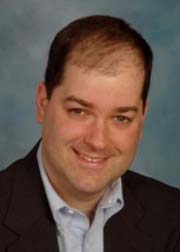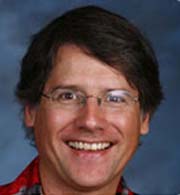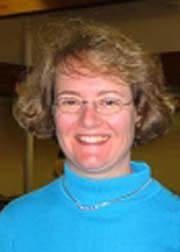Register
Click here to register on-line, and pay by credit card (deadline 5 pm, October 13th).
Click here to register by mail, and pay by check (deadline October 13th).
Fall 2009 SoCal-Nev Section Meeting
CSU San Bernardino, (Directions and Map)
Saturday, October 17, 2009
Tentative Program
- 8:15-12:00 Registration
Jack Brown Hall - 8:15-10:30 Refreshments
Jack Brown Hall - 8:30-2:30 MAA Book Sale
Jack Brown Hall
Organized by Richard Katz and Michael Hoffman, Cal State Los Angeles - 9:00-10:00 Invited Address by Jason Rosenhouse, James Madison University
The Monty Hall Problem, Reconsidered
Jack Brown Hall - 10:00-10:15 Section Business Meeting
Jack Brown Hall - 10:30-12:00 Faculty and Student Contributed Paper Sessions
Call for contributed papers
Jack Brown Hall
Organized by Min-Lin Lo, CSU San Bernardino - 12:00-1:30 Luncheon
Location TBA - 1:30-2:30 Invited Address by Curtis Bennett, Loyola Marymount University
Understanding the Thurston Model of Hyperbolic Space
Jack Brown Hall - 2:30-2:45 Refreshments
Jack Brown Hall - 2:45-3:45 Invited Address by Andrea Bertozzi, University of California, Los Angeles
Swarming, by Nature and by Design
Jack Brown Hall - 4:00-5:00 Workshop by Bruce Yoshiwara, Pierce College, Janet Beery, University of Redlands, Robert Baker, University HS, and Kirby Baker, UCLA
MAA Mathematical Sciences Digital Library
Jack Brown Hall
Directions and Maps
For directions to California State University, San Bernardino, please see http://www.csusb.edu/MapsDirections/. The parking fee is $5. The best place to park is in Parking Lot E off of Coyote Drive. Registration, all invited addresses, all contributed papers, the workshop, and the Book Sale will be in Jack Brown Hall, with only the luncheon in a different building.
Register
Click here to register on-line, and pay by credit card (deadline 5 pm, October 13th).
Click here to register by mail, and pay by check (deadline October 13th).
Registration Fees
| Registration | |
| Nonmember | $35 |
| MAA Member | $30 |
| Student | $12 |
| Registration and Luncheon | |
| Nonmember | $50 |
| MAA Member | $45 |
| Student | $20 |
On-site registration will be available for the meeting, but will be $5 more than the pre-registration charge.
Register on-line
Click here to access on-line registration, and pay by credit card.
Register by mail
Click here for a pdf of the preregistration form. Trouble viewing the pdf?
Jason RosenhouseJames Madison University
|
Jason Rosenhouse received his PhD in Mathematics from Dartmouth College in 2000, and then was a post-doc at Kansas State University for three years. Currently he is Associate Professor of Mathematics at James Madison University in Harrisonburg, VA. His book, The Monty Hall Problem: The Remarkable Story of Math's Most Contentious Brainteaser, was published by Oxford University Press in May of 2009. He is also a professional blogger for Seed Magazine, focusing on issues related to science, religion, and politics. You can find his blog at http://www.scienceblogs.com/evolutionblog.
|
The Monty Hall Problem, Reconsidered
Imagine you are on a game show confronted with three identical doors. Two of them conceal goats, while one of them conceals a car. You choose one of the doors but do not open it. The host of the show now opens one of the other two doors, careful always to open one he knows to conceal a goat. He now gives you the choice of either sticking with your initial choice, or switching to the other remaining door. You then win whatever is behind your door. What decision should you make to maximize your chances of winning the car?This is known as the Monty Hall Problem, and it is one of the most famous brainteasers in all of mathematics. Most people find the correct solution, that you double your chances by switching doors, to be deeply counter-intuitive. We will discuss the problem and numerous variants, focusing on how to think clearly about problems in conditional probability. Along the way we will show how an entire first course in probability theory can be taught using nothing but variations on the Monty Hall Problem.
Curtis BennettLoyola Marymount University
Teaching Award Recipient

|
Curtis D. Bennett received his PhD in Mathematics from the University of Chicago in 1990 in the area of groups and geometries. Since then he has held positions at Michigan State University, The Ohio State University, and Bowling Green State University, and he is currently Professor and Chair of the Mathematics Department at Loyola Marymount University in Los Angeles. Dr. Bennett has published over 30 articles in mathematics and the scholarship of teaching and learning in mathematics. He was the co-editor of the book Starting Our Careers with Annalisa Crannell and was a founding editor of the Young Mathematicians Network. He has presented at two Preparing Mathematicians to Educate Teachers (PMET) workshops, and co-presented the mini-course, A Beginners Guide to the Scholarship of Teaching and Learning, at the Joint Mathematics Meetings in 2006, 2007, and 2008. In the spring of 2009, he was awarded the MAA Southern California-Nevada Section Distinguished Teaching Award. Bennett will receive the prestigious Franklin and Deborah Tepper Haimo Award for Distinguished College or University Teaching, awarded to three MAA members each year, at the Joint Mathematics Meetings in San Francisco in January of 2010 |
Understanding the Thurston Model of Hyperbolic Space
A common student model for hyperbolic space (due to Bill Thurston) can be made by gluing seven equilateral triangles together at each vertex. In this talk, we will investigate this “model” for hyperbolic space on a tour that starts with a question from The Heart of Mathematics and then moves from Pick’s Theorem to the Gauss-Bonnet theorem.
Andrea BertozziUCLA
|
Andrea Bertozzi is Professor of Mathematics at UCLA and currently serves as Director of the Program in Computational and Applied Mathematics. From 1995 to 2004 she was on the faculty of Duke University, most recently as Professor of Mathematics and Physics. During 1995-96 she was Maria Goeppert-Mayer Distinguished Scholar at Argonne National
Laboratory. From 1991 to 1995 she was a Dickson Instructor at the University of Chicago. She received AB, MA, and PhD degrees in Mathematics from Princeton University. Her current research interests include image in painting, image segmentation, cooperative control of robotic vehicles, swarming, and fluid interfaces.
Prof. Bertozzi has been a plenary or distinguished lecturer for both SIAM and AMS and is Associate Editor for the SIAM journals Multiscale Modeling and Simulation, SIAM Journal on Mathematical Analysis, and SIAM Review Survey and Reviews section. She also serves on the editorial board for Interfaces and Free Boundaries (EMS), Nonlinearity (IOP), and Applied Mathematics Research eXpress (OUP). Her past honors include a Sloan Foundation Research Fellowship and the Presidential Career Award for Scientists and Engineers from the Office of Naval Research. |
Swarming, by Nature and by Design
The cohesive movement of a biological population is a commonly observed natural phenomenon. With the advent of platforms of unmanned vehicles, such phenomena have attracted a renewed interest from the engineering community. This talk will survey the speaker's research and related work in this area ranging from aggregation models in nonlinear PDE to control algorithms and robotic testbed experiments. We conclude with a discussion of some interesting problems for the applied mathematics community.
Bruce YoshiwaraPierce College
Janet BeeryUniversity of Redlands
|
Bruce Yoshiwara has been teaching full-time at Los Angeles Pierce College since 1989, except for a Fulbright Teacher Exchange at Barnsley College, England, in 1998-1999. He is Associate Editor of the MAA's online journal Loci and a member of the MathDL Advisory Board. He is a consultant for the MAA's Project NExT, a Consulting Colleague for AMATYC's Project ACCCESS, and serves on the board of California Mathematics Council Community Colleges-South. Yoshiwara also was the 2008 recipient of the MAA Southern California-Nevada Section Distinguished Teaching Award. Read more about Bruce Yoshiwara in the Fall 2008 Newsletter Janet Beery is Professor of Mathematics at the University of Redlands, where she has taught since 1989. She received the PhD in Mathematics from Dartmouth College in 1989, specializing in group theory. She is editor of the journal, Convergence: Where Mathematics, History, and Teaching Interact, which is part of the MAA Mathematical Sciences Digital Library (MathDL), and she is a member of the MathDL Advisory Board. Dr. Beery writes and speaks widely on the history of mathematics and especially on the mathematics of Thomas Harriot (c. 1560-1621). From 2002 to 2008, she served on the College Board AP Calculus Examination Development Committee. From 2006 to 2008, she was College Board Advisor for AP Calculus, which included commissioning and editing AP Calculus teaching resources for both online and print publication. |
Workshop: MAA Mathematical Sciences Digital Library (MathDL)
The National Science Foundation’s selection of the MAA as creator and custodian of the primary mathematics pathway in the National Science Digital Library (NSDL) reflected NSF’s commitment to providing tools for mathematics education at all levels as well as to promoting pioneering research in the mathematical sciences. The Mathematical Sciences Digital Library (MathDL) is the MAA’s multi-faceted response to this tremendous opportunity. This workshop is designed to show participants what MathDL has to offer them, including opportunities to contribute to existing MathDL features and departments as well as to suggest new ones. Participants will have much time for exploration of the site.Call for Contributed Papers
Faculty and students (undergraduate and graduate) are invited to submit short proposals for 15-minute talks in the Contributed Paper Session of the Fall Meeting. All topics will be considered. The selection of talks will be based on interest to expected audience and on scheduling constraints.
Submissions for all contributed papers should contain a title, an abstract (not to exceed one-half page and suitable for inclusion in the conference program), the desirable mathematical background of the audience, and any special presentation display needs other than an overhead projector.
Please email all submissions to Min-Lin Lo at mlo@csusb.edu. The submission deadline is Friday, October 2, 2009.